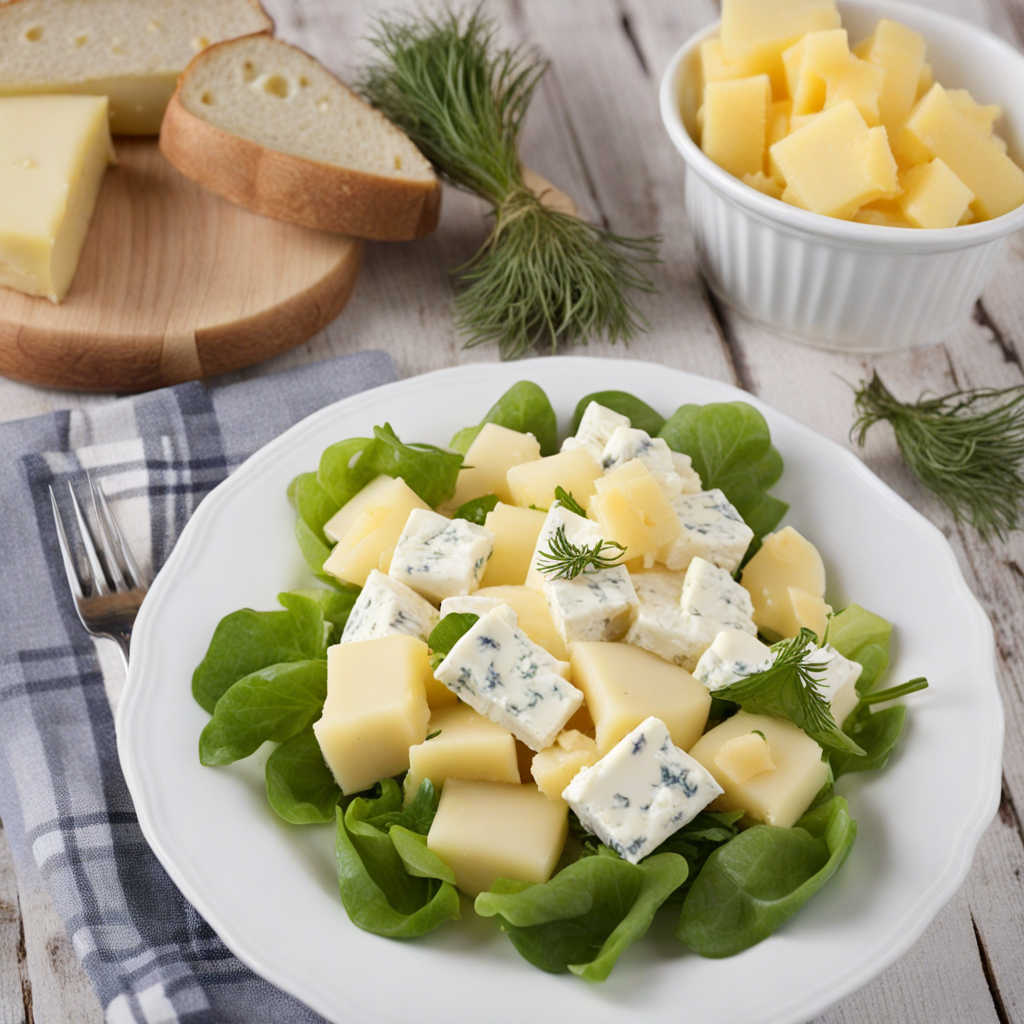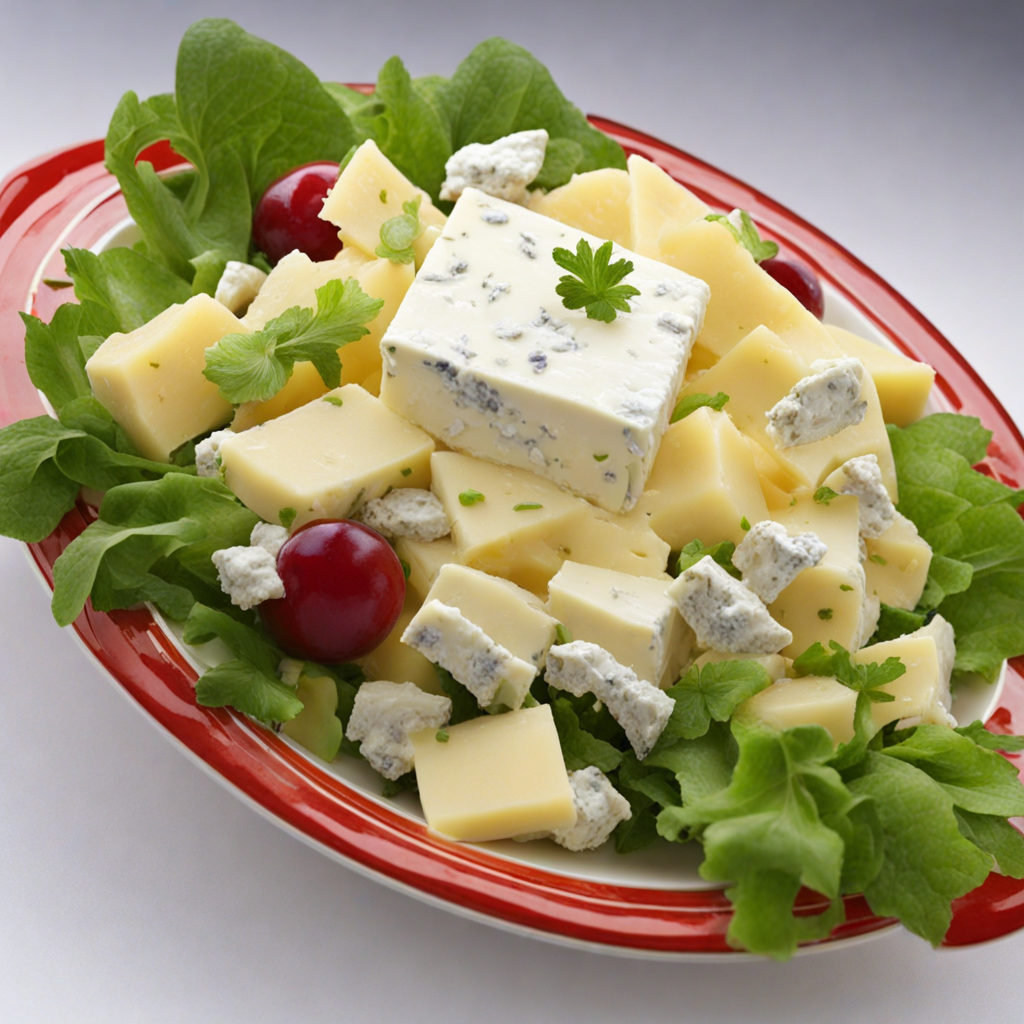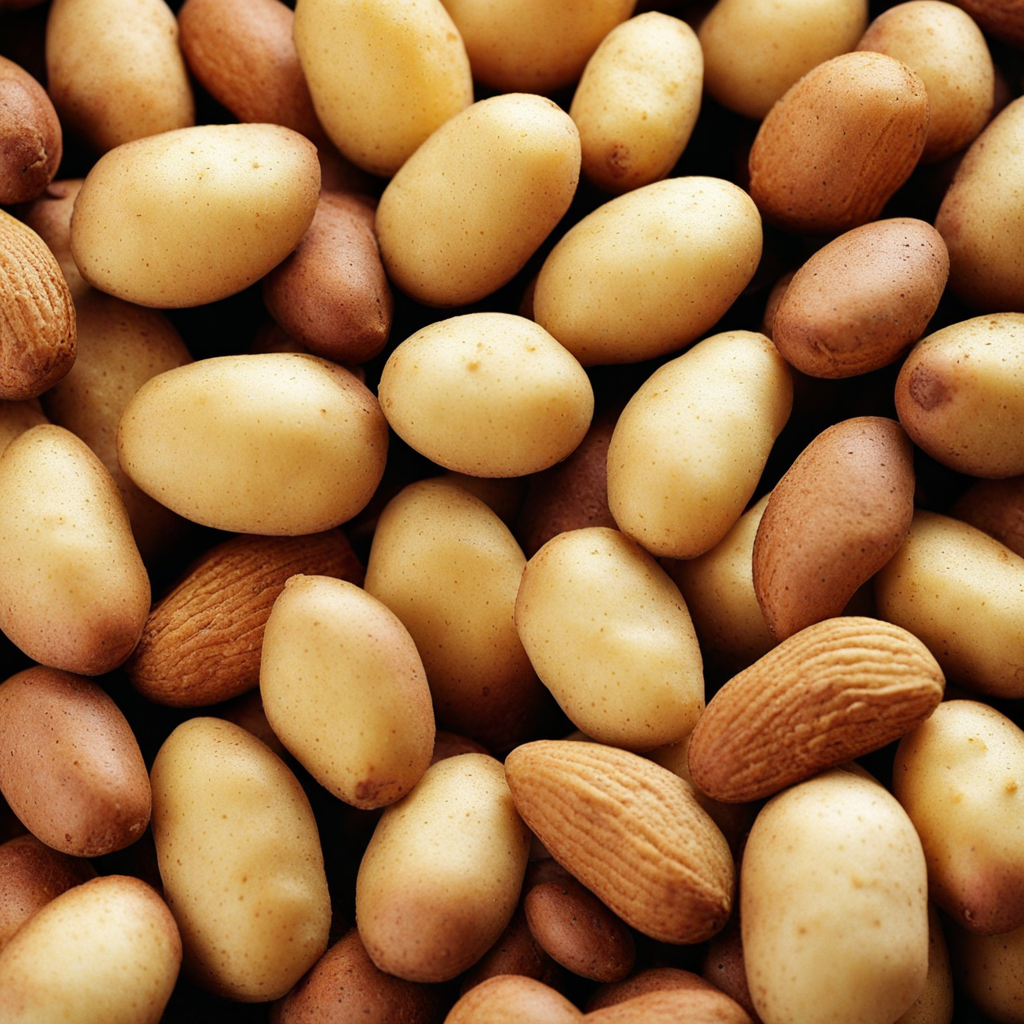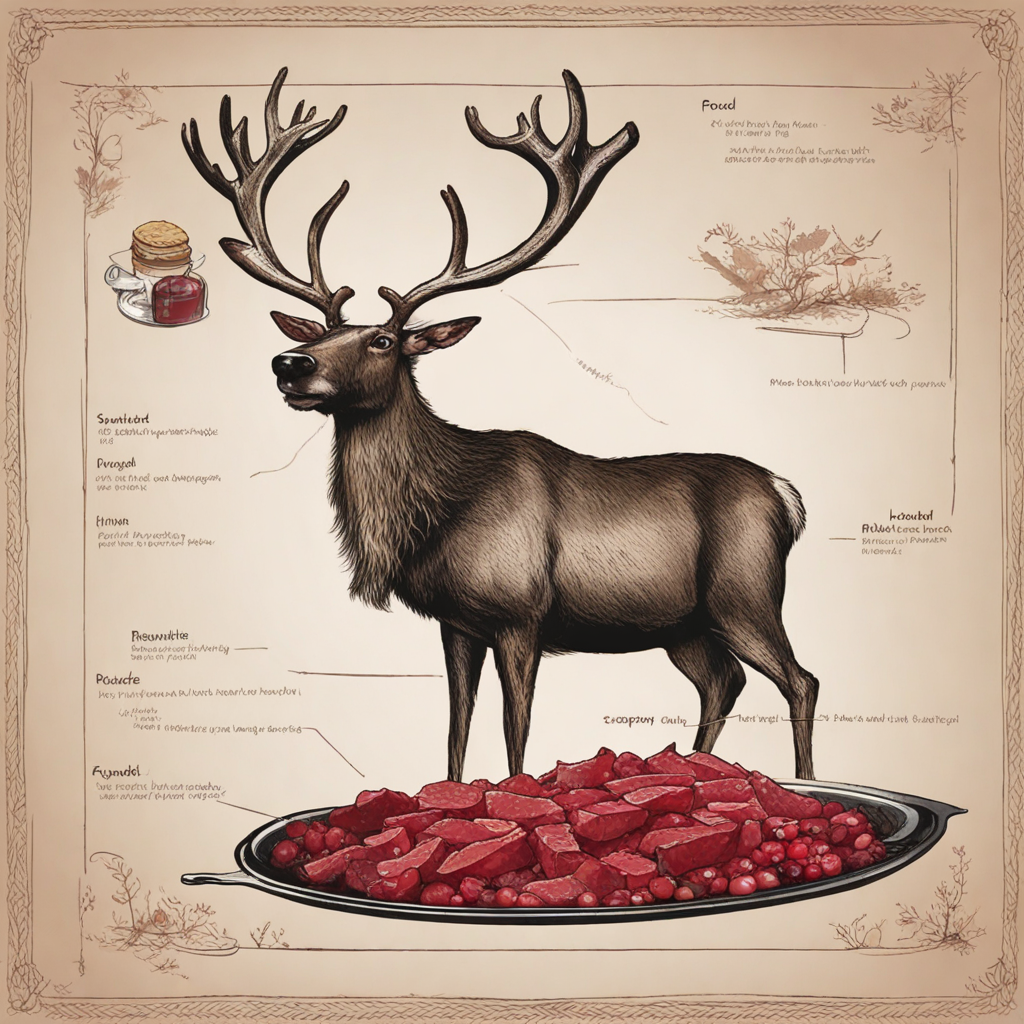Finnish Cheese Salad
Finnish Cheese Salad is a delightful medley that showcases the fresh flavors of Finland's rich dairy heritage. At its core, the salad features a variety of local cheeses, often including the mild and creamy leipäjuusto (bread cheese) and the tangy, crumbly finlandia cheese. These cheeses are typically cubed or crumbled and tossed with vibrant, seasonal vegetables such as crisp cucumbers, juicy cherry tomatoes, and colorful bell peppers, creating a visually appealing dish. The combination of textures—from the softness of the cheese to the crunchiness of the vegetables—makes each bite an exciting experience. To elevate the flavor profile, Finnish Cheese Salad is often dressed with a simple yet zesty vinaigrette made from balsamic vinegar, olive oil, and a touch of fresh herbs like dill or parsley. This dressing complements the creaminess of the cheese while enhancing the natural freshness of the vegetables. Sometimes, a sprinkle of roasted seeds or nuts, such as sunflower seeds or walnuts, adds an extra layer of crunch and nuttiness, making the salad not only delicious but also satisfying. What truly sets Finnish Cheese Salad apart is its versatility and the emphasis on using locally sourced, high-quality ingredients. This dish can be enjoyed as a light lunch, a side dish for a summer barbecue, or even as a refreshing appetizer. It embodies the essence of Finnish cuisine, which celebrates simplicity, freshness, and the natural flavors of its ingredients, making it a must-try for anyone looking to explore new culinary horizons.
How It Became This Dish
The History of Juustosalaatti: A Finnish Culinary Delight #### Origins of Juustosalaatti Juustosalaatti, often translated as "cheese salad," is a beloved dish in Finland that embodies the nation's culinary simplicity and love for fresh, wholesome ingredients. Its roots can be traced back to the agrarian lifestyle of Finnish farmers, who relied on dairy products as staple components of their diet. The dish traditionally features a combination of cheese—often a mild, fresh cheese such as juusto (or "Finnish squeaky cheese")—paired with a medley of vegetables and sometimes fruits, creating a dish that is both nourishing and versatile. Cheese-making in Finland has a long history, with techniques passed down through generations. The earliest records of cheese production in Finland date back to the Middle Ages, influenced by neighboring cultures in Scandinavia and the Baltic region. Juusto, the primary cheese in juustosalaatti, is particularly associated with the region of Ostrobothnia and is made using cow, goat, or sheep's milk. Its unique texture and flavor profile make it an excellent base for a salad, which has evolved over the years to include seasonal vegetables, herbs, and dressings. #### Cultural Significance Juustosalaatti occupies a special place in Finnish culture. It is more than just a dish; it represents a way of life that values the bounty of the land and the importance of communal meals. In Finland, food has always been a means of bringing people together, whether at family gatherings, community festivals, or holiday celebrations. Juustosalaatti is often served during festive occasions, particularly Midsummer and Christmas, highlighting its significance in the Finnish culinary tradition. The salad also reflects the Finnish ethos of "sisu," a term that embodies determination, resilience, and the spirit of survival in challenging conditions. Just as the Finnish people have adapted to their environment, juustosalaatti showcases the ability to create something beautiful and delicious from simple, locally-sourced ingredients. The combination of cheese and vegetables speaks to the Finnish commitment to health and wellness, aligning with contemporary trends towards plant-based and wholesome diets. #### Development Over Time As Finland modernized throughout the 20th century, so too did the culinary landscape. Juustosalaatti began to evolve, with new ingredients and flavors being introduced. The post-war era saw an increase in access to various food products, including imported goods, which influenced traditional recipes. The inclusion of ingredients such as olives, nuts, and exotic fruits became popular, allowing for a more diverse range of flavors in juustosalaatti. In the 1980s and 1990s, as global culinary trends began to influence Finnish cuisine, juustosalaatti further transformed. The rise of health consciousness among consumers led to a greater emphasis on fresh vegetables and light dressings. Many Finnish chefs began to experiment with the dish, incorporating elements of international cuisine and presenting it in innovative ways. This period marked a shift from the traditional preparation methods to more modern interpretations, emphasizing presentation and flavor balance. Today, juustosalaatti can be found in various forms across Finland. It is served in homes, restaurants, and cafes, often reflecting the unique culinary styles of different regions. Seasonal variations are common, with ingredients changing based on what is available locally. Summer versions may feature fresh strawberries, cucumbers, and herbs, while winter variations might include roasted root vegetables and nuts, showcasing the adaptability of the dish. #### Contemporary Trends and Future Potential In recent years, as the farm-to-table movement has gained traction globally, juustosalaatti has found renewed appreciation. Chefs and home cooks alike are embracing the idea of using locally-sourced, organic ingredients, which aligns perfectly with the dish’s humble origins. Finnish dairy farms have also become more innovative, producing a range of artisanal cheeses that elevate juustosalaatti to new culinary heights. Furthermore, the growing interest in Finnish cuisine on the international stage has led to a resurgence of traditional dishes, including juustosalaatti. Food festivals, culinary competitions, and gastronomy events have spotlighted Finnish food culture, bringing traditional dishes into the limelight and inspiring chefs to reinterpret them for modern palates. The use of social media and food blogs has also played a crucial role in sharing Finnish culinary traditions with the world, leading to a broader appreciation of dishes like juustosalaatti. Juustosalaatti’s versatility has also made it a popular choice for contemporary diets. With increasing interest in vegetarian, vegan, and gluten-free options, many variations of the salad have emerged, catering to diverse dietary preferences while maintaining the essence of the original dish. Plant-based cheeses and innovative dressings have made it possible for anyone to enjoy juustosalaatti, ensuring its relevance in today’s culinary landscape. #### Conclusion Juustosalaatti is more than just a salad; it is a reflection of Finnish culture, history, and the adaptability of its people. From its rural origins to its contemporary interpretations, the dish tells a story of resilience, community, and the celebration of local ingredients. As Finland continues to embrace its culinary heritage while adapting to global trends, juustosalaatti remains a cherished part of the nation’s food culture—one that will likely continue to evolve while retaining its roots in the heart of Finnish cuisine. In a world where culinary boundaries are increasingly blurred, juustosalaatti stands as a testament to the enduring power of tradition, nurturing a connection to the land and the community, all while inviting new generations to partake in its delightful flavors.
You may like
Discover local flavors from Finland







